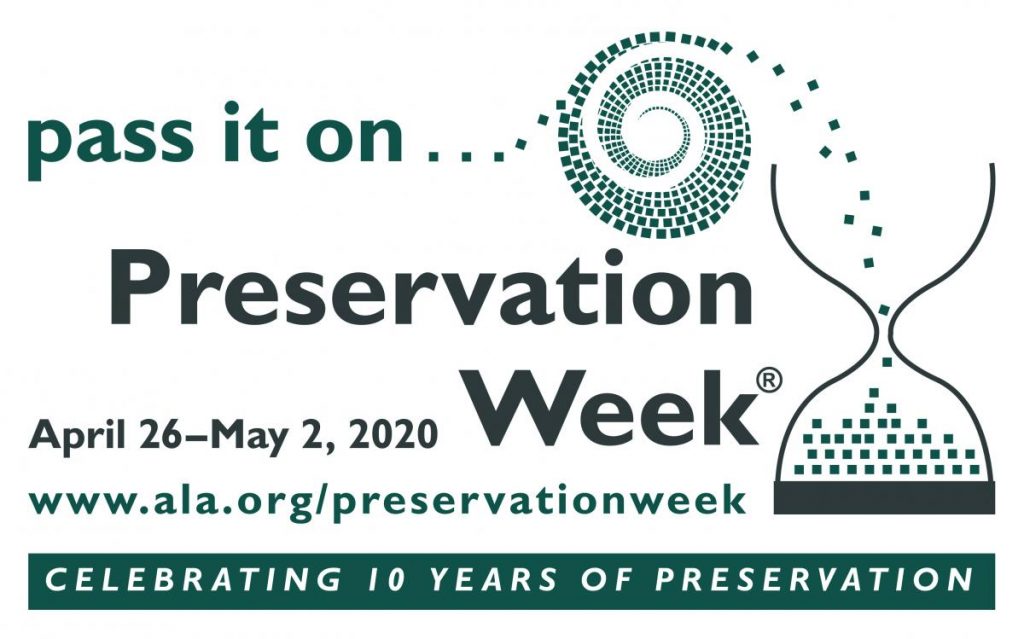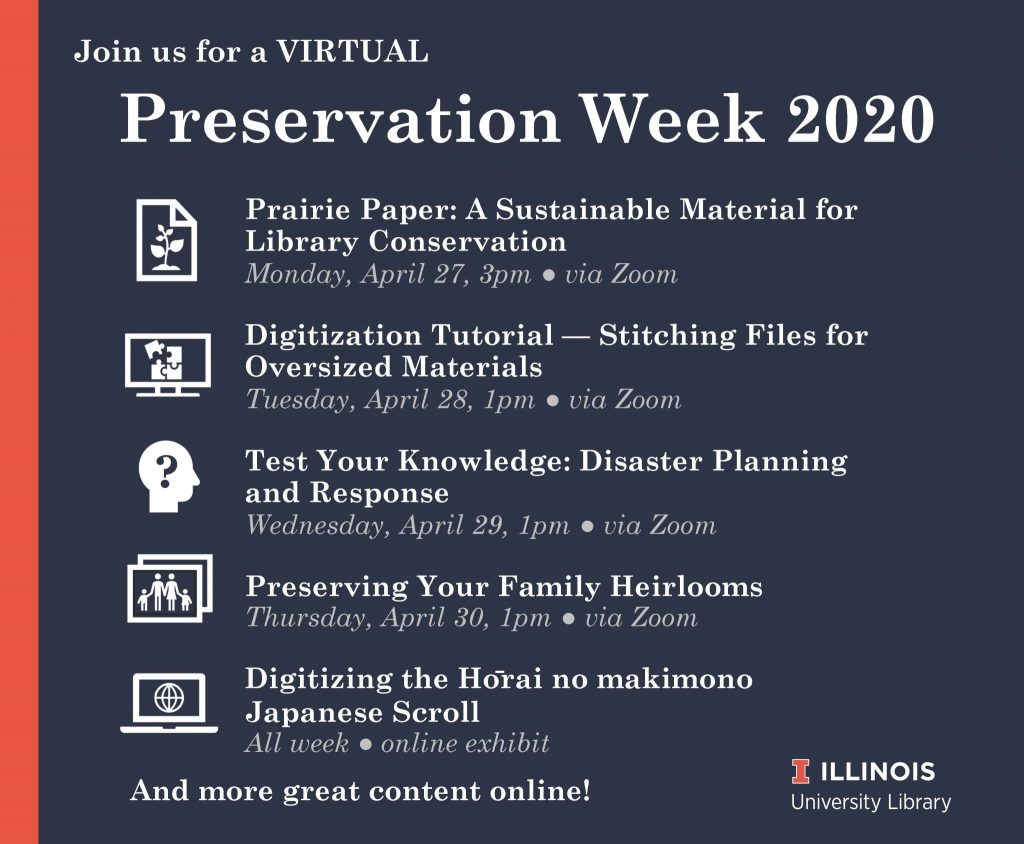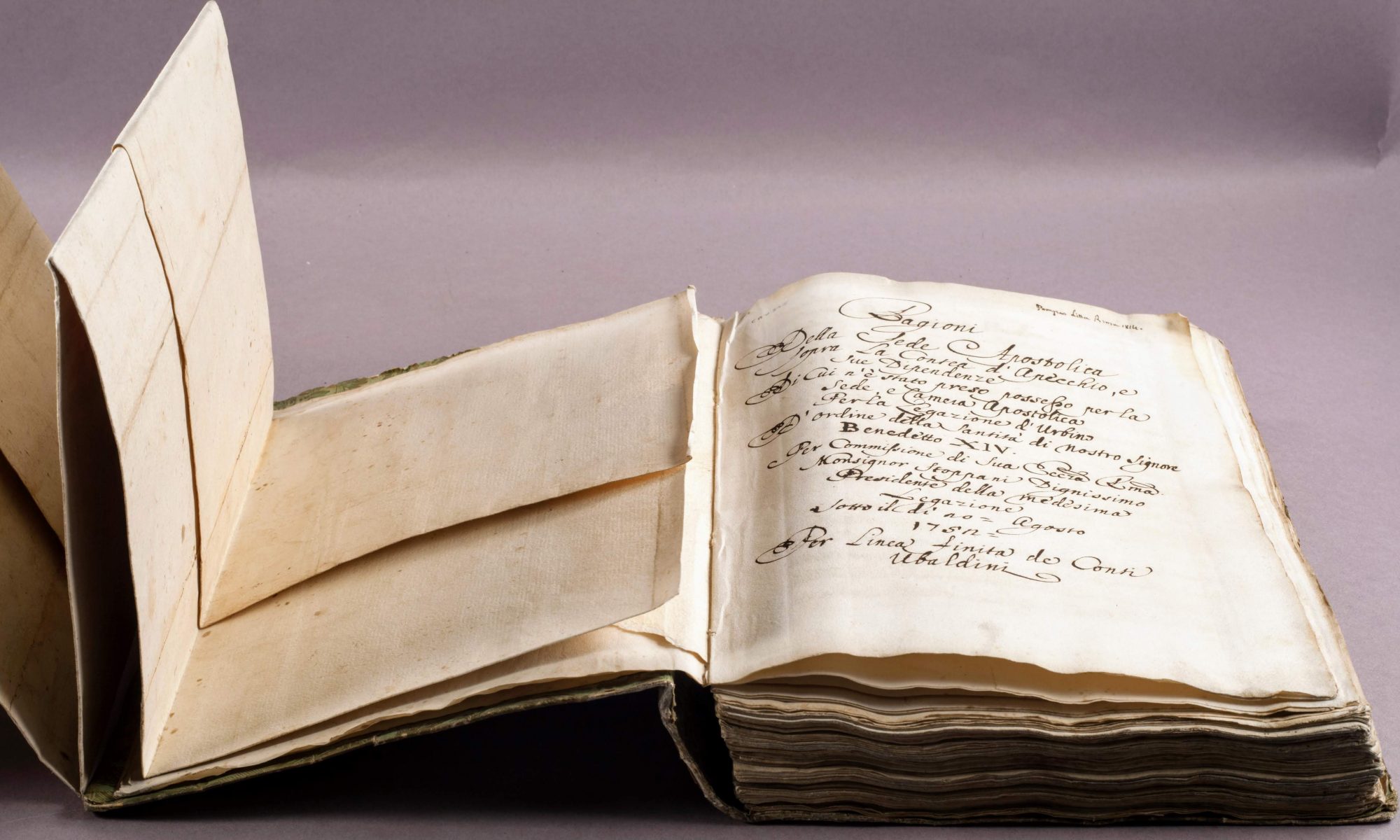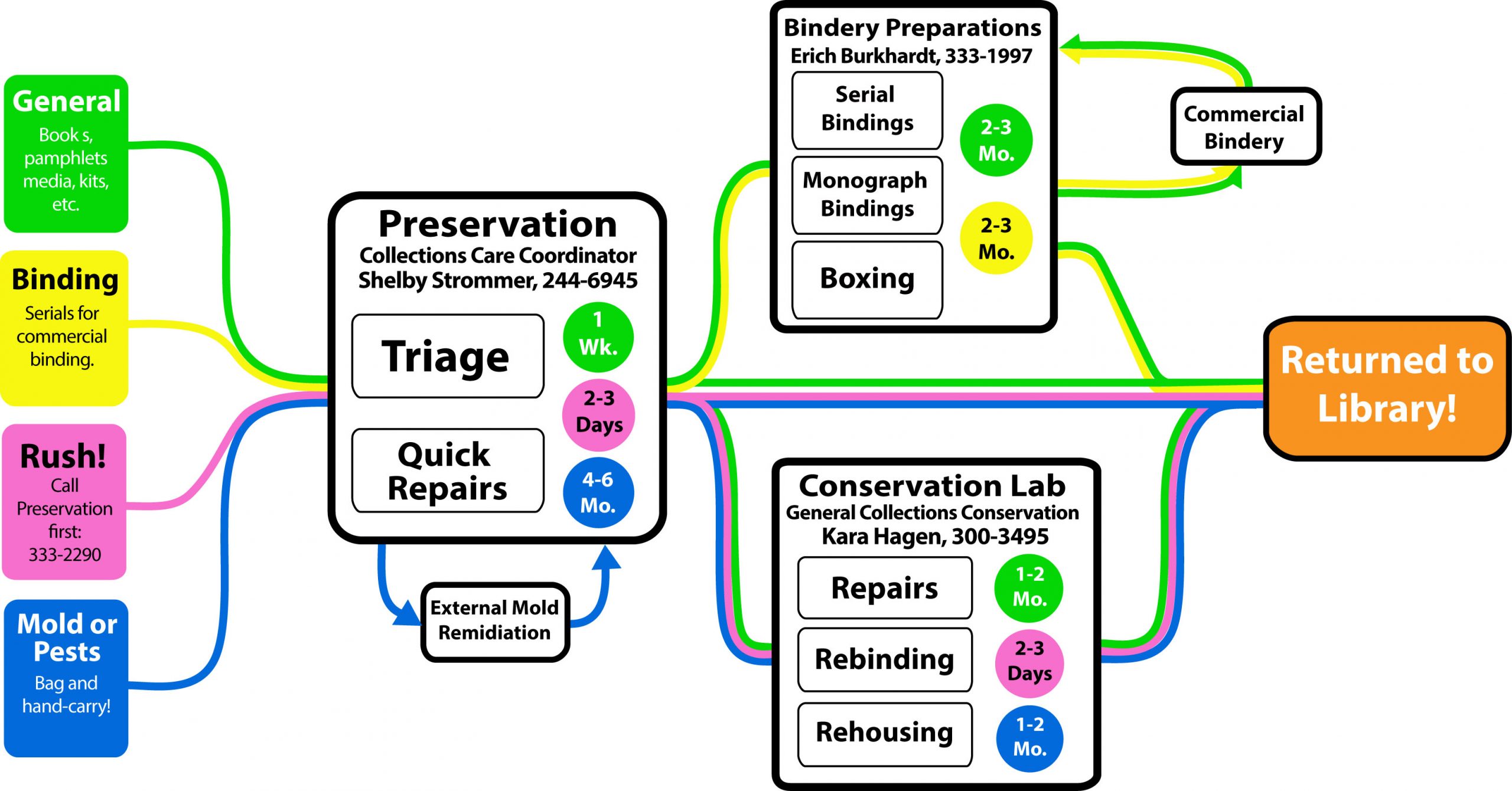
Preservation Week 2020 | April 26 – May 2, 2020
We celebrate preservation every day in Preservation Services at the University of Illinois, which is why we get so excited when National Preservation Week rolls around! This year, between April 26th and May 2nd, the American Library Association is celebrating its 10th annual recognition of Preservation Week. This week is dedicated to advocating for the care of cultural heritage materials in our communities and collecting institutions. Typically, the week consists of various preservation-themed events for communities, galleries, libraries, archives, and museums. The official ALA Preservation Week theme this year is “Preserving Oral History,” although the week also serves as an opportunity to spread awareness of all forms of preservation.
Preservation: What is it?
Preservation is the act of caring for cultural heritage to ensure its wellbeing and longevity. Preservation is necessary because collections in libraries, museums, or even your attic will gradually deteriorate over time. Eventually, our material heritage will no longer exist; preservation seeks to slow the process by which materials degenerate so that we may access, appreciate, and learn from them for as long as possible.
Some causes of deterioration include:
- The Environment: Light exposure, Temperature, Humidity
- Direct Physical Forces
- Disasters: Fire & Water
- Pests
- Contaminants
- Inherent Vice, or an innate quality of the object that predisposes it to deterioration e.g. cellulose nitrate film base or acidic iron gall ink
For many years, collections care was done reactively instead of proactively, and most action to conserve collections was allocated to the most precious collection items. Now, preservation specialists practice preventive care of collections and they don’t limit the prevention of damage to the most expensive or rare items. The field of preservation has developed slowly, and still, only recently has the importance of preserving items in our memory institutions gained public awareness.
In 2005, Heritage Preservation and the Institute of Museum and Library Services conducted a comprehensive national survey of the condition of the nation’s collections. This study had a huge impact on the field as it brought about an awareness of how many items were at risk (approximately 4.8 billion) and spurred action to care for these items. Then, in 2014, the study was repeated, and the number of collections reportedly held by memory institutions had grown to over 14 billion, not including 30.7 million cubic feet and 32.6 million linear feet of unbound materials, and over 387 TB of digital information. The study concluded that “preservation is part of the mission for a vast majority of U.S. collecting institutions. Yet many, especially small institutions, have not yet prepared for emergencies and have faced challenges in many actions related to preservation, including conservation practices with digital content.”
These surveys revealed the need for improved environmental storage conditions, increased emergency planning and disaster response training, and at least one staff member to have preservation training in collecting institutions. The Association for Library Collections and Technical Services (ALCTS) a division of ALA, began Preservation Week in 2010 in tandem with the growing awareness and concern for at-risk items in cultural heritage collections. Preservation week continues to be a great opportunity for library, archives, and museum professionals to connect with communities about their collections, to provide advice and information about preservation, and to provide an opportunity to highlight an institution’s work in preservation.
“Some 630 million items in collecting institutions require immediate attention and care. Eighty percent of these institutions have no paid staff assigned responsibility for collections care; 22 percent have no collections care personnel at all. Some 2.6 billion items are not protected by an emergency plan. As natural disasters of recent years have taught us, these resources are in jeopardy should a disaster strike. Personal, family, and community collections are equally at risk.” – official ALA statement on the importance of preservation week
Preservation at the University of Illinois
Preservation at Illinois began as early as 1934 when the Mending Division was established as a part of a Federal Emergency Relief Administration (FERA) grant as a Division of the Binding Department. In the sixties, the division was renamed to ‘Binding, Marking, and Conservation,’ but by 1986, the division was split – Binding and Marking shifted to the Acquisitions Unit, and the Conservation Unit reported to the Preservation Librarian. Today, the Conservation Unit still reports to the Preservation Librarian, and both the Preservation and Conservation Units are a part of the Technical Services Division. For a more in-depth history of Preservation and Conservation at the University of Illinois, check out our history, here.
“The Preservation Services Unit exists to provide long-term access to the physical and intellectual contents of the Library’s collections through conservation, preservation, and digitization. These programs seek to provide this access with an eye toward maximizing the Library’s investment in collections, services, and staff while continually seeking to improve the services that we provide.” – Mission of the University of Illinois Preservation Services
Preservation Services at Illinois will be hosting online webinars, online exhibits, virtual posters, and more for Preservation Week!

CHECK OUT THIS PAGE FOR THE FULL LIST OF OFFERINGS!
Other Preservation Week Resources:
References:
Costain, C. 1994. “Framework for the preservation of museum collections” Canadian Conservation Institute Newsletter 14:1
Heritage Preservation. The Public Trust at Risk: The Heritage Health Index Report on the State of America’s Collections. Heritage Preservation, Washington DC, 2005.
Institute of Museum and Library Services. Protecting America’s Collections: Results from the Heritage Health Information Survey. Washington, DC., 2019.
Preservation, Conservation, and Digitization Services. A Brief History. Accessed at https://www.library.illinois.edu/staff/preservation/about_us/history/



